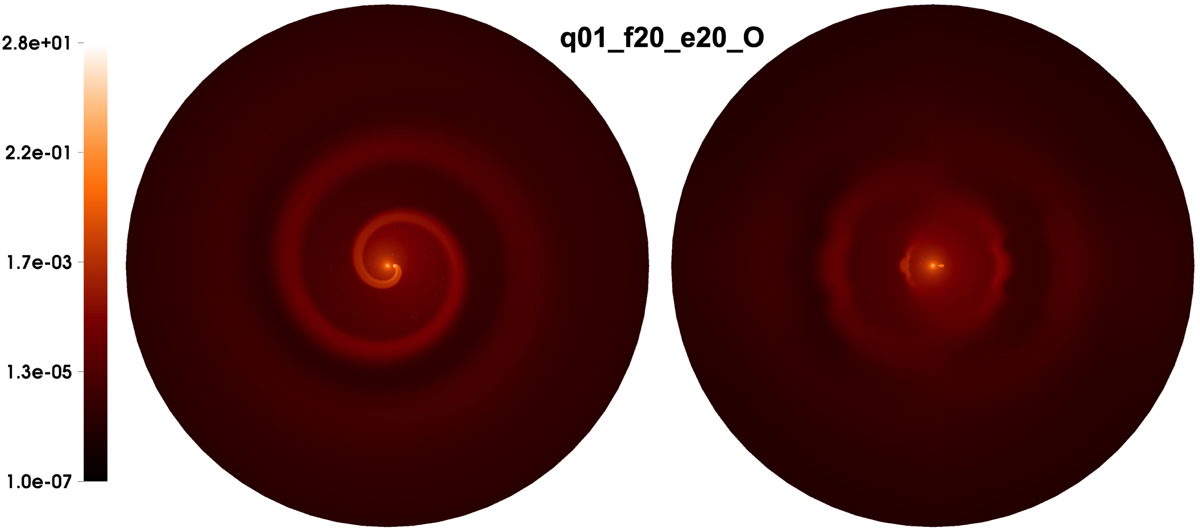Fig. 9.

Download original image
3D hydrodynamical simulation for a binary system containing a mass-losing AGB star. Slices of density are shown, in units of the density at the sonic point, in the orbital plane (left column) and in the plane containing the orbital axis and the line joining the two bodies (right column). The dimensionless parameters for this simulation are the mass ratio, q = M1/M2 = 1; the ratio of the terminal to orbital speed η = v∞/vorb = 2, the dust condensation radius filling factor f = Rd/RR, 1 = 20% (with RR, 1 the Roche lobe radius of the primary), and the β exponent setting the steepness of the velocity profile here being 5 (El Mellah et al. 2020). For a dust condensation radius set to 3 R⋆, the dimensionless parameters translate into an orbital separation of ∼35 R⋆. Due to binary interaction, a spiral shock is created in the circumstellar envelope. The spiral structure is readily recognised in the density slice in the orbital plane and the width of the successive spiral windings can be deduced from the density arcs in the edge-on view.
Current usage metrics show cumulative count of Article Views (full-text article views including HTML views, PDF and ePub downloads, according to the available data) and Abstracts Views on Vision4Press platform.
Data correspond to usage on the plateform after 2015. The current usage metrics is available 48-96 hours after online publication and is updated daily on week days.
Initial download of the metrics may take a while.


